
Death Wobble. The name alone strikes fear into the heart of even the most grizzled, hardcore Jeeper. The introduction of four-link suspensions used on Jeep Cherokees starting in 1984 and Wranglers beginning in 1997 provided a better ride, along with far more articulation and wheel travel, than the previous leaf springs. There is a tradeoff though; all of those links in your suspension have a bushing at each end, and bushings wear out. So do ball joints, unit bearings, and tie rod ends, particularly when they have to contend with big, heavy tires and wheels with shallow offset. All of that opens the door for a visit from the automotive grim reaper known as death wobble.
The biggest issue with death wobble is that it can have so many more causes than say, a driveline vibration, which can typically be narrowed down to a bent driveline, improper angle, or worn u-joint. Death wobble doesn’t always occur under the same circumstances either making it difficult to diagnose. One thing is certain though, if you have ever experienced death wobble you want to remedy it as quickly as possible. Not only because it is terrifying, but all of that shaking wreaks havoc on tires, ball joints, and track bar bushings. This accelerated wear can lead to even more death wobble and a longer repair list. If you experience death wobble, let off the gas and let the vehicle slow on its own until the vibration is gone, then proceed carefully and immediately to a place where the vehicle can be parked and inspected. Don’t fear the reaper though, we are here to help you get rid of death wobble from your Jeep for good.
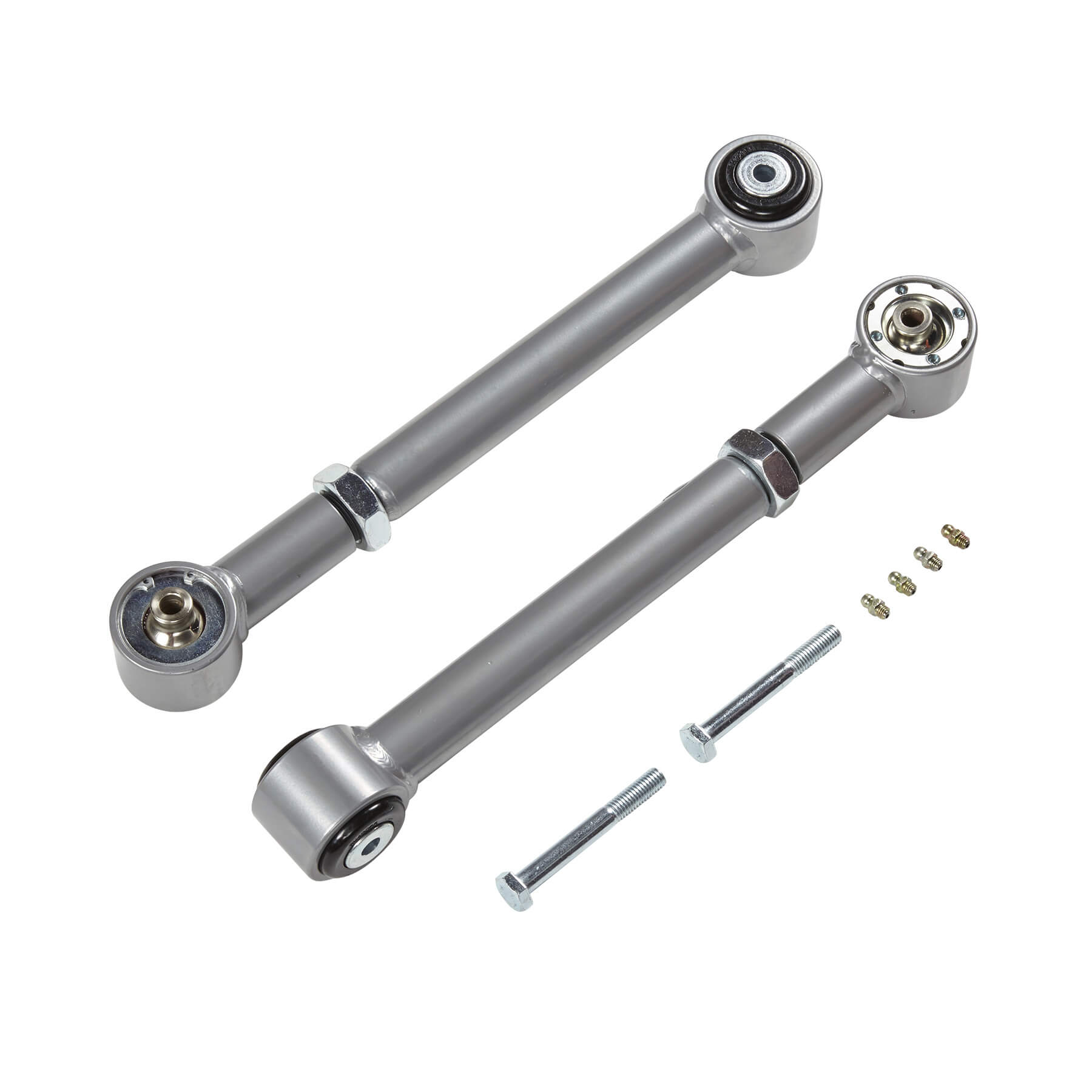
Any wear item in your suspension or steering can potentially cause death wobble. Most factory control arms use softer rubber bushings that can wear out over time. Make sure to check them for wear and replace them with better aftermarket versions if needed.
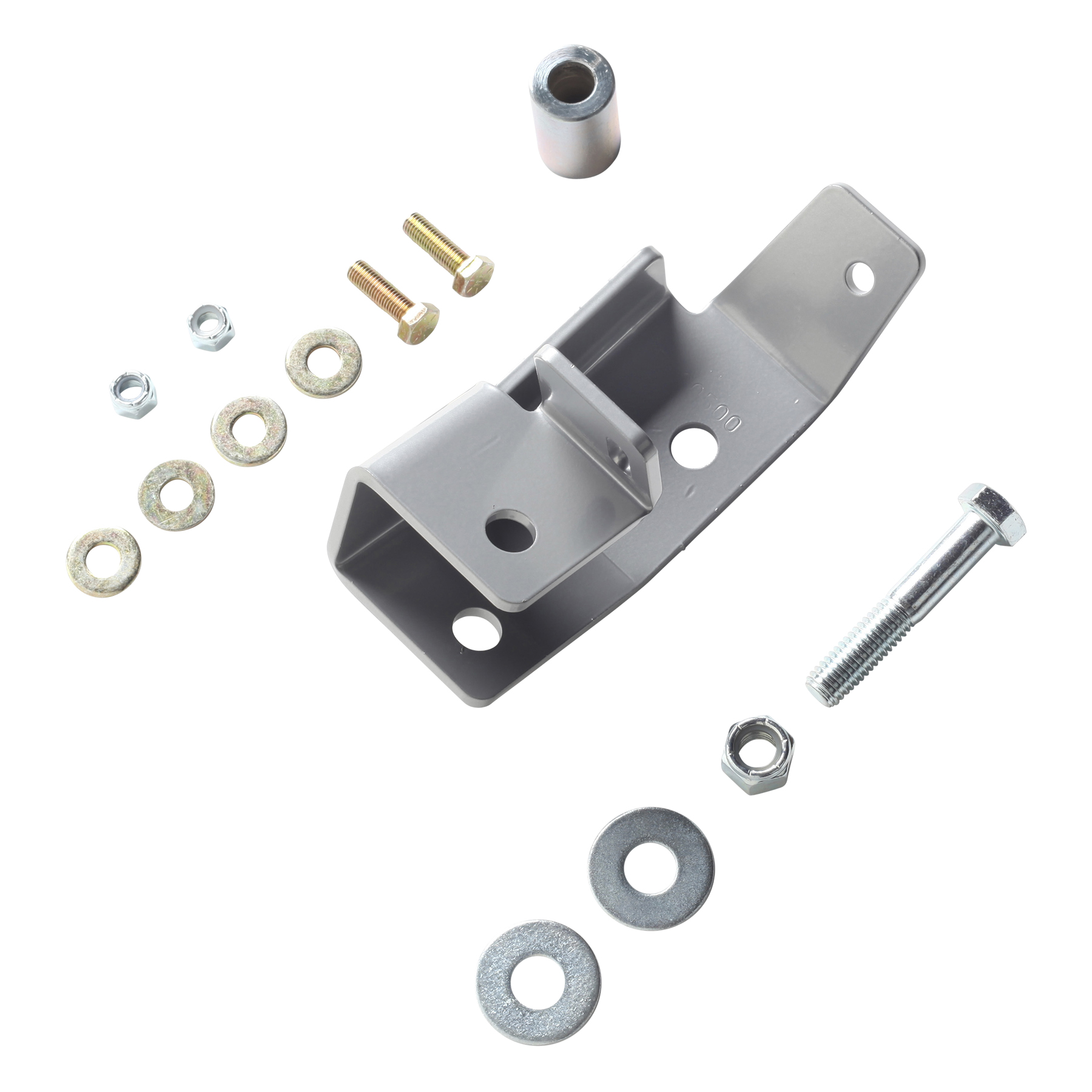
The track bar bushings also wear over time and need to be checked. But many forget about the track bar bracket. Aftermarket brackets usually bolt to the frame and the torque of those bolts should be checked to ensure they haven’t come loose.
Start With The Simple Stuff
There are a lot of moving parts under your Jeep, including the steering components, suspension links, and axles. It is important to reiterate that no one problem causes death wobble, but rather any combination of factors, which can include tire balance, loose hardware, worn components, and/or bad alignment. All of these issues can conspire together to create a domino effect that could ultimately lead to death wobble. Curing the situation requires a thorough process of elimination.
Start with the easy things by having a friend saw the steering wheel back and forth while you check under the vehicle to ensure nothing is loose or worn beyond its limits. Put a wrench on all of the suspension and steering components to ensure nothing is loose. These two things could fix your death wobble issue without costing a dollar.
If you added new parts recently, like a suspension lift or larger tires, they might be the culprit. Did you have the tires professionally balanced? Did you get an alignment after the suspension was installed? If you still have your old tires, consider swapping back to determine if that eliminates the death wobble.
Suspension Components That Contribute To Death Wobble
While four-link (five if you count the track bar) suspensions offer an improved ride when compared to leaf springs, they also have significantly more moving parts. Control arms are responsible for locating the axle fore and aft and preventing the housing from rotating. The track bar controls the side-to-side movement. If they are not doing their job due to worn bushings or loose hardware, the axle can move uncontrollably. Drop brackets that keep the track bar parallel with the drag link after a drop pitman arm was installed improve suspension geometry, but their bolt-on design allows them to loosen over time. Check the bushings one at a time for wear and make sure to torque all of the hardware to spec, using a thread-locking compound.
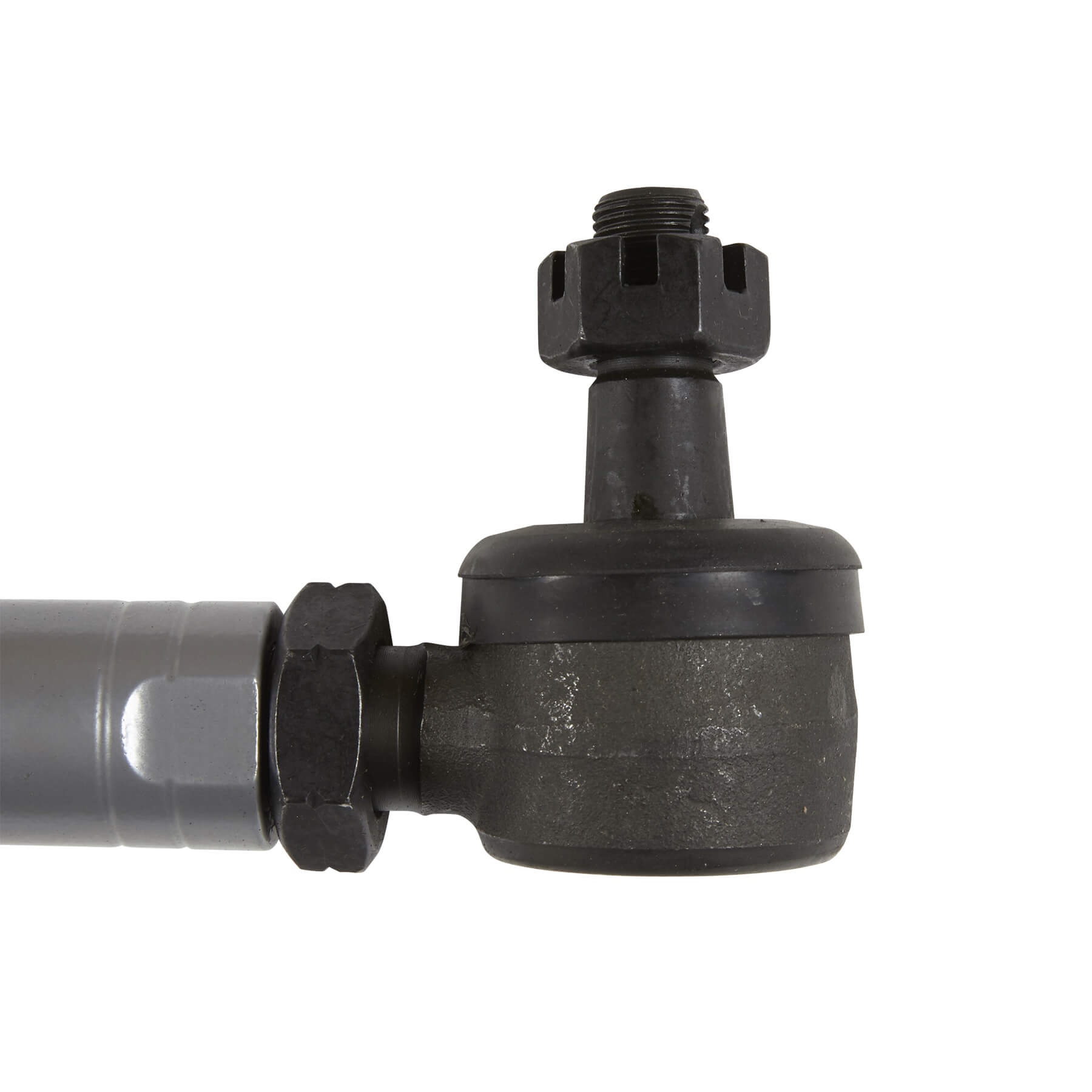
Tie rod ends are subjected to a lot of different forces and abuse, particularly with big tires that are aired down and used off-road. If, and when, these parts get worn because of hard use and improper maintenance they can develop slop or play. Make sure to check them and we would upgrade the whole tie rod assembly with a stonger unit if they are worn.
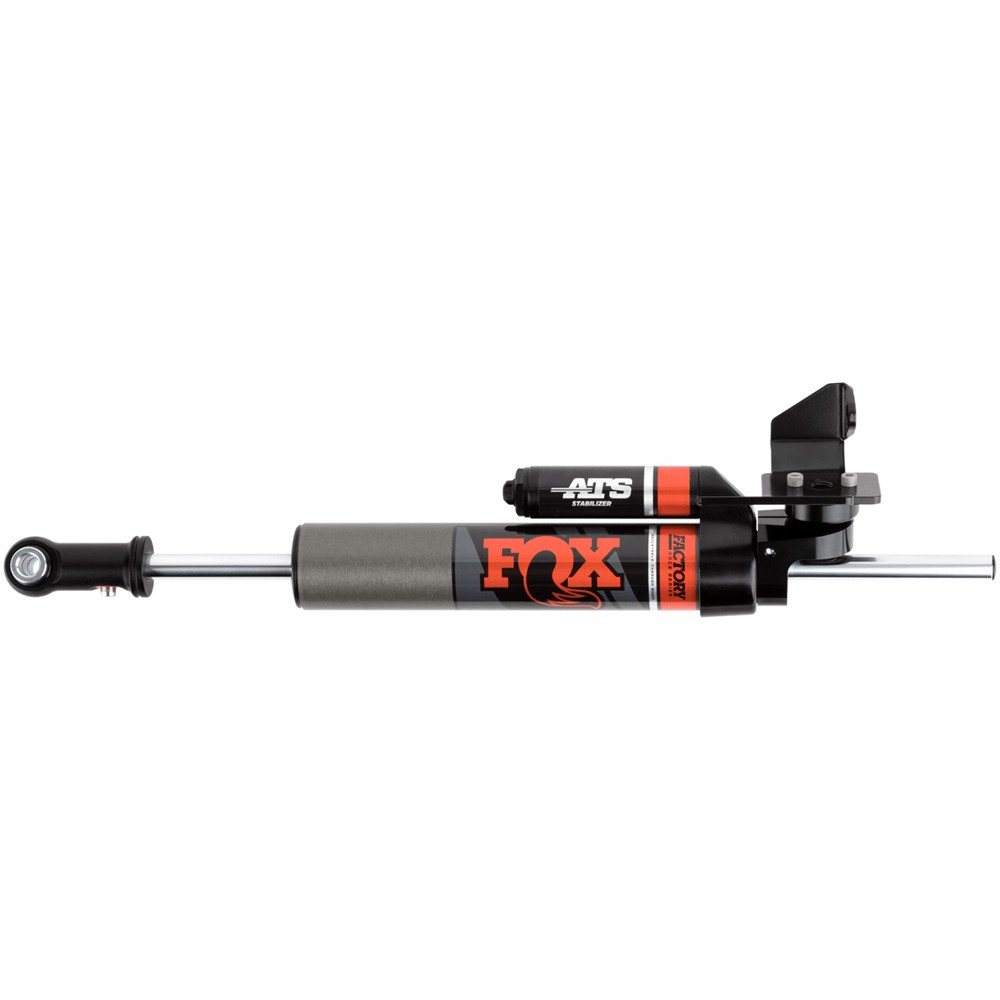
Some might think of a steering stabilizer as a “cure” for death wobble, but it is not. A steering stabilizer only masks the problem. That doesn’t mean you shouldn’t run one as a good steering stabilizer can help cushion some of the impact to your steering system. This helps components live a longer life and keeps your hands happy on the wheel.
Steering Components That Contribute To Death Wobble
Steering components are subject to large forces, particularly when trying to turn big, heavy tires that are aired down for trail use. Turning the tires when the vehicle is not moving creates an even greater strain on the tie rod ends, drag link ends, steering box, and steering shaft. The ball-and-socket design of tie rod ends wears over time, creating more movement within the parts. Fortunately, new tie rod ends are not overly expensive, so if you notice any excess movement in them, we recommend replacing them. The steering box isn’t as simple or inexpensive, but companies such as PSC and AGR made upgraded steering boxes with bigger internal components that are stronger than stock. Adding hydraulic assist can also take much of the stress off the steering box (and the frame). We recommend this upgrade if running 37-inch tall tires or bigger.
Is A Steering Stabilizer A Cure?
While steering stabilizers can mask frontend issues, they aren’t a “fix” for death wobble. That said, they are still an important part of the steering system. A properly working and mounted stabilizer can help absorb impacts and lessen the strain on the steering system. Also, note that not all steering stabilizers in the aftermarket are created equal. Some companies sell shocks designed to mount in the vertical position as a steering stabilizer that gets installed in the horizontal position. The problem with this arrangement is that some of these shocks, when horizontally mounted, can experience a change in resistance through the stroke. A good steering stabilizer has linear resistance throughout the entire stroke, such as the Fox Adjustable Through Shaft (ATS) Stabilizer.
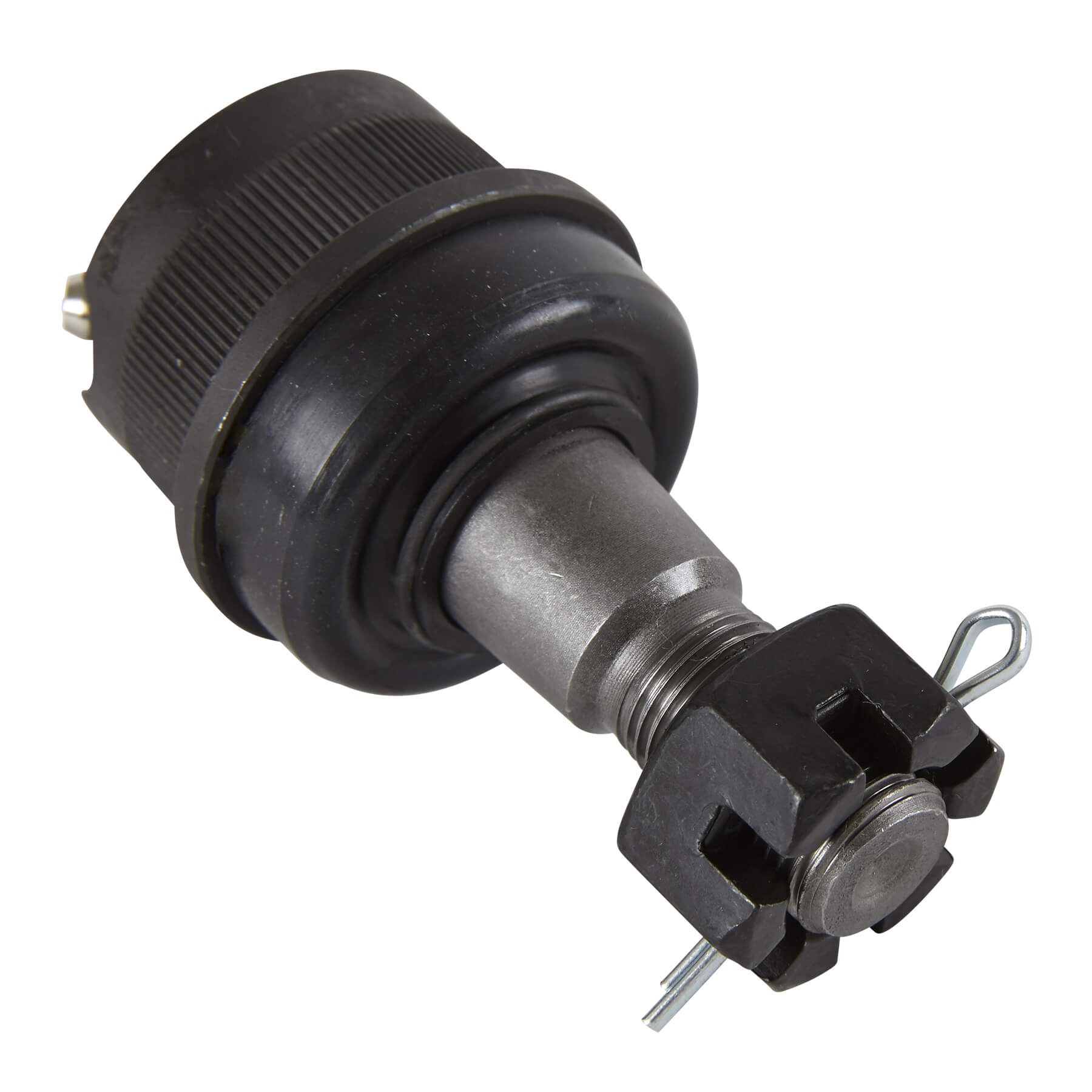
The factory ball joints in Jeeps can wear amazingly fast. You are going to want to check them for play (see below for how) and replace them if needed. We wouldn’t even bother with factory joints, but swap in much stronger aftermarket options.
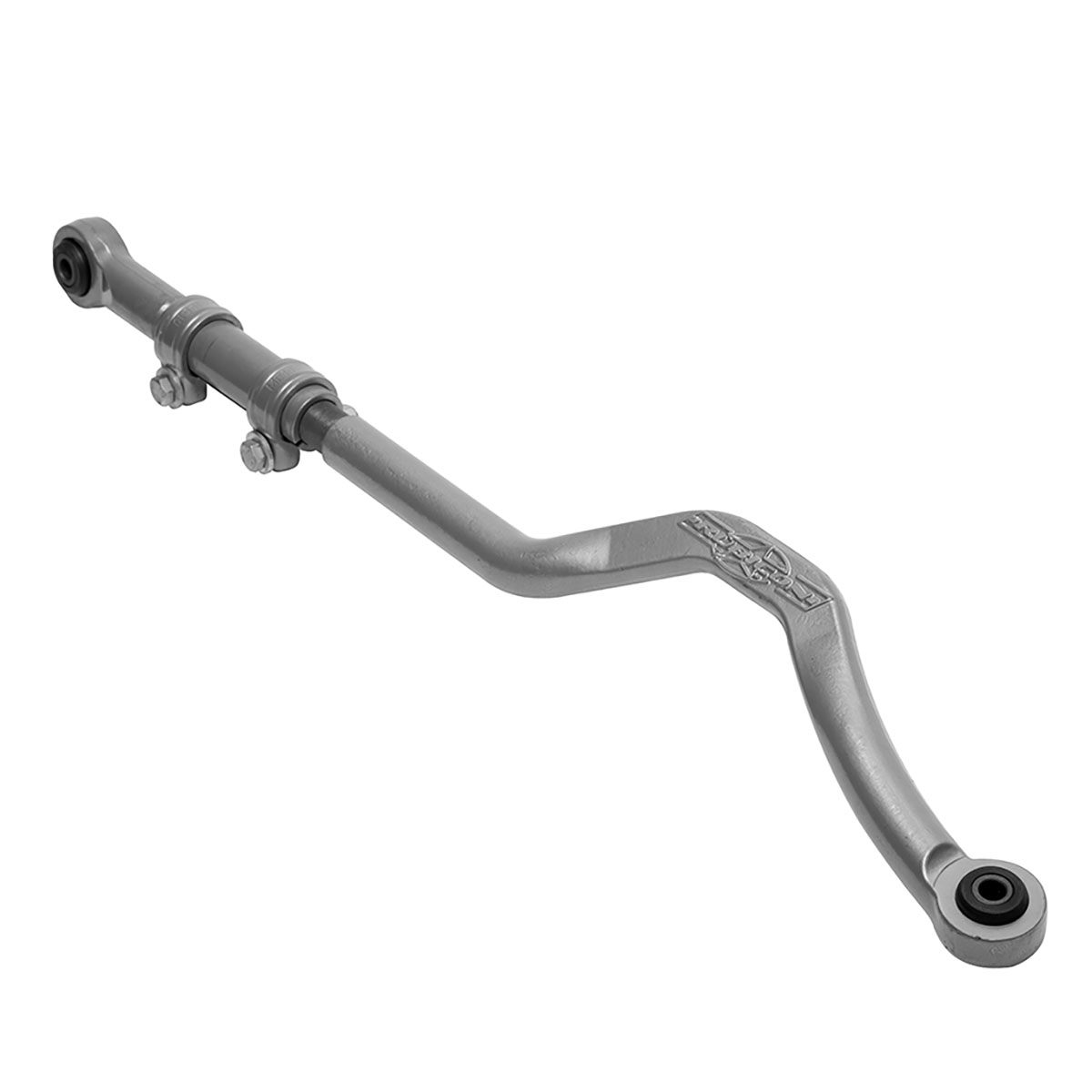
One of the biggest culprits of death wobble is usually worn track bar bushings. They definitely need to be closely inspected for wear. If they are shot, it is a good time to upgrade to stronger track bar that comes with fresh bushings.
Axle Components That Contribute To Death Wobble
The steering knuckle has to turn relative to the axle housing and upper and lower ball joints make this possible. These parts are very similar in design and function to tie-rod ends and subject to the same wear concerns. Add in bigger, heavier tires and wheels with less than factory backspacing and the forces acting on your ball joints increase. To test your ball joints for wear, jack up the front wheels of your Jeep and grab the tire at three and nine o’clock and see if there is any play. Then grab the tire at twelve and six o’clock and give it another shake. If it only moves at twelve and six, the issue is the ball joints, but if it moves in all directions you may have a worn unit bearing. Unlike the fixed spindles and bearings of older vehicles, a unit bearing must be entirely replaced. The good news is that they are only held on by four bolts and you don’t have to get greasy to change one.
Replace Parts Or Upgrade?
While it is possible to replace worn components with stock replacement parts, they don’t provide much confidence that you won’t be plagued by death wobble again in the future. Nearly every component we have mentioned in this article as contributing to death wobble can be replaced with a stronger, more durable aftermarket upgrade. For starters, Rubicon Express offers bolt-in control arms with Flex Joints that won’t wear out like rubber bushings, Currie Enterprise’s Currectlync steering has larger than stock tie rod ends with a wider range of motion, and a host of companies offers heavy duty, rebuildable ball joints. There is no reason to live with death wobble.

Worn ball joints and unit bearings are also a significant cause of death wobble. Jack up the vehicle and grab the front and back (3 o’clock and 9 o’clock) of the tire and see if there is any play. Then grab the top and bottom of the tire and see if there is any play up and down. Up and down play suggests bad ball joints, while play in every direct suggests worn unit bearings.
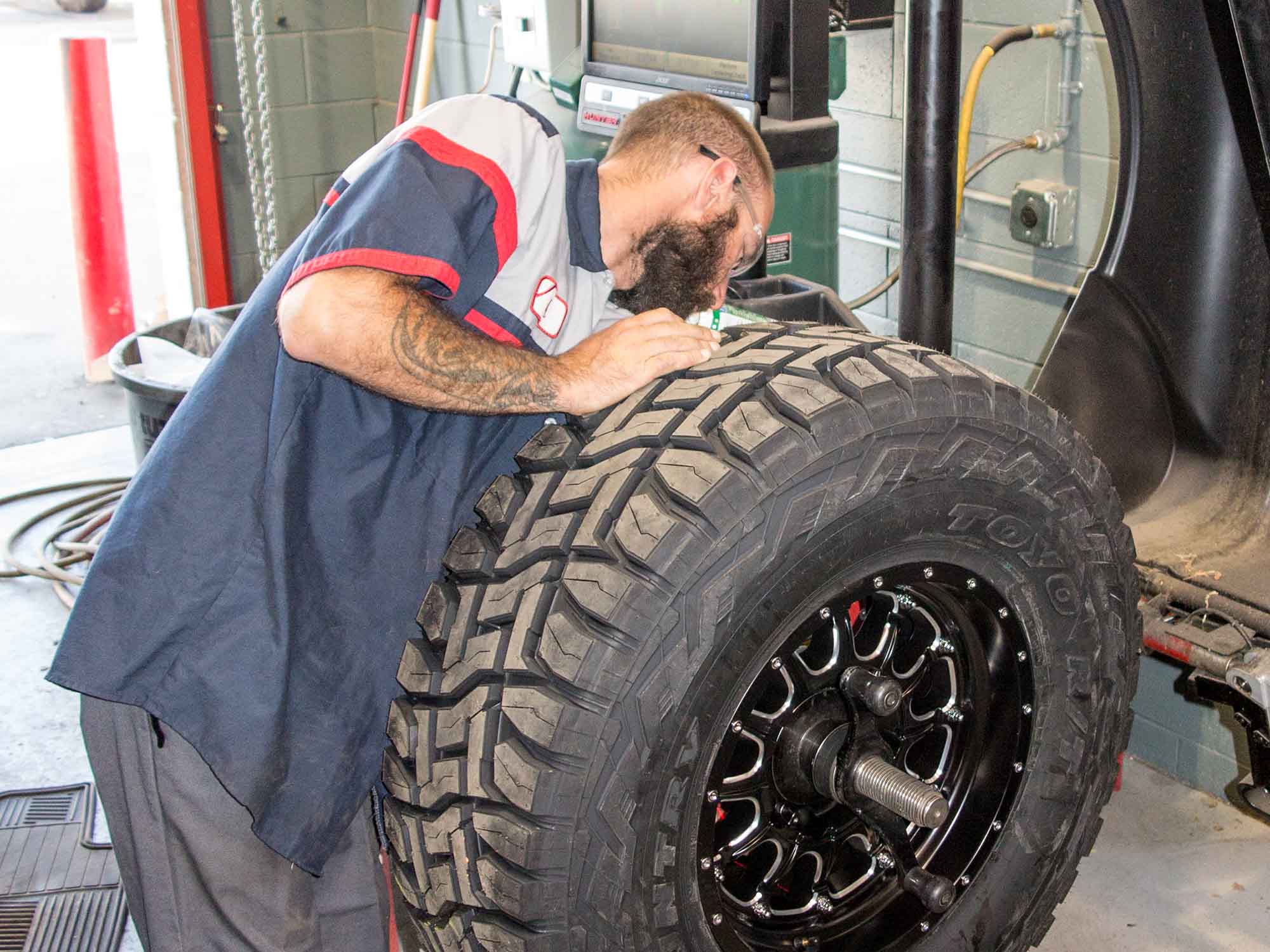
The larger and more aggressive your tires are, the more difficult they are to balance. Oscillations from unbalanced tires can initiate death wobble at freeway speeds. Dried mud packed inside rims can also contribute to imbalance, so clean out your wheels after playing in the mud. Also, make sure to check you wheels periodically as wheel weights have a habit of disappearing off road.



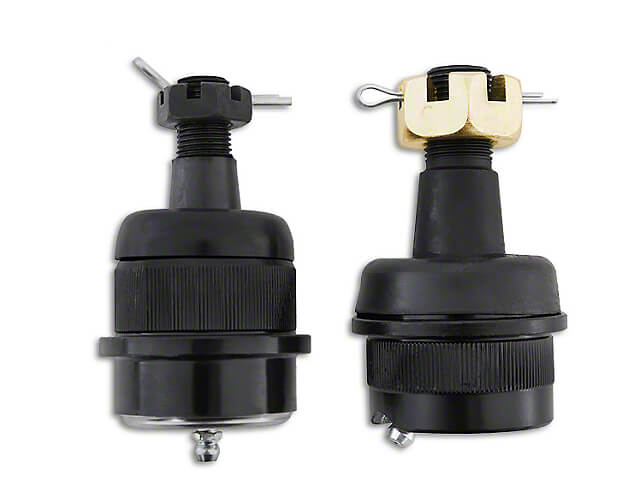
2